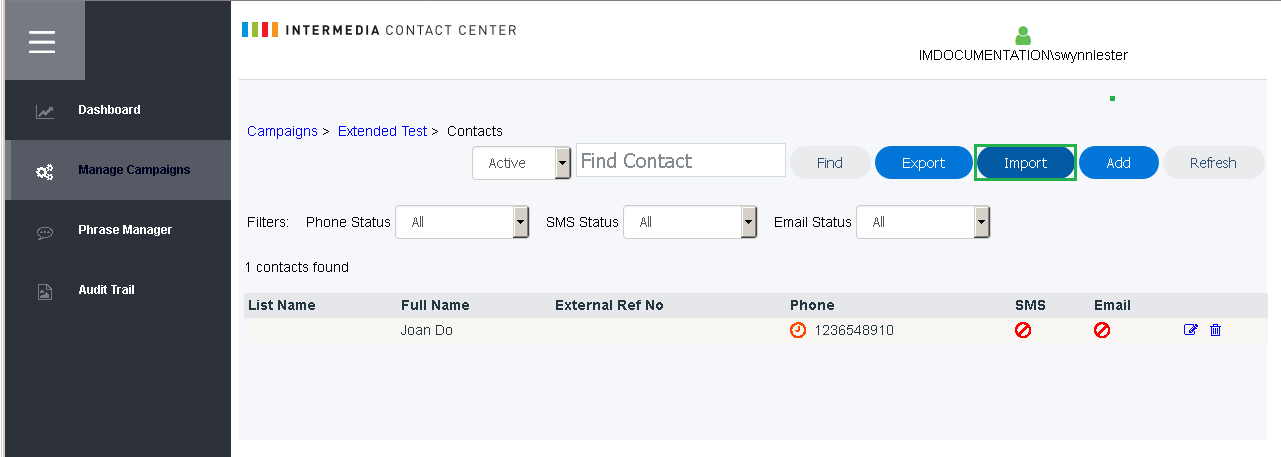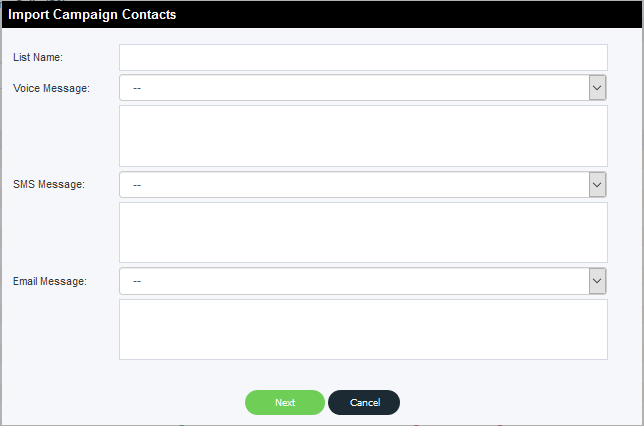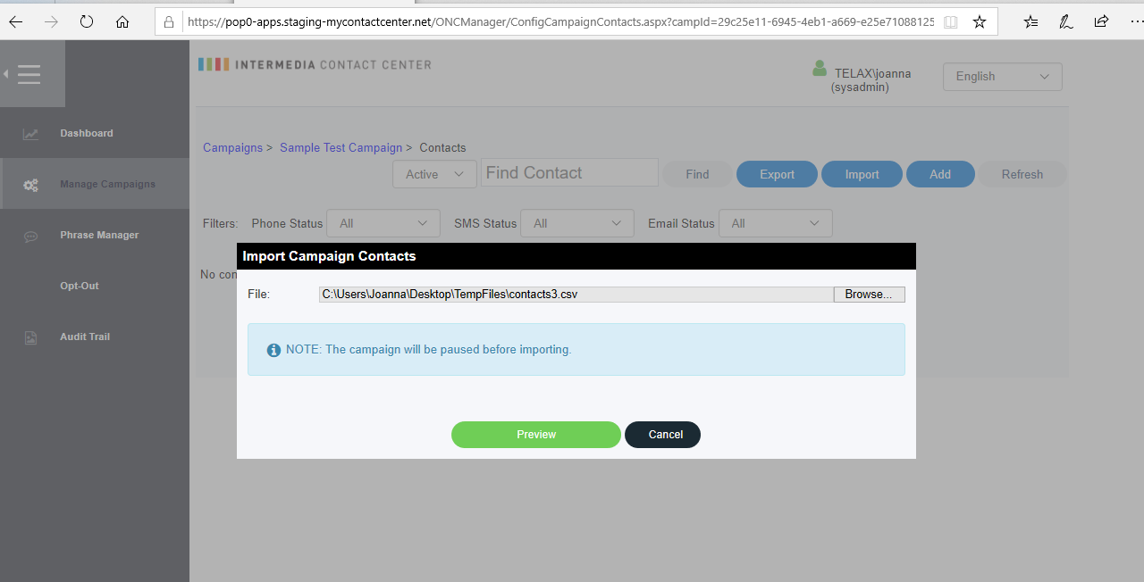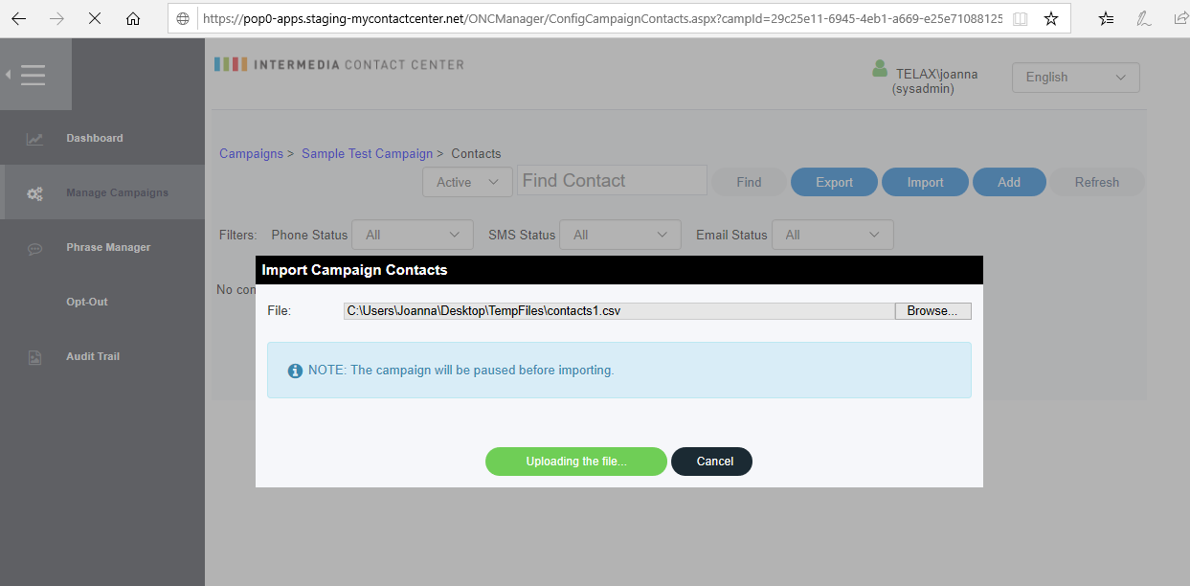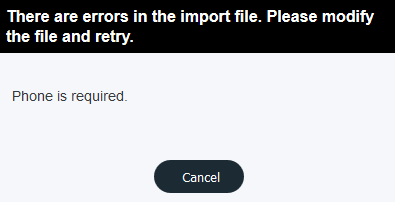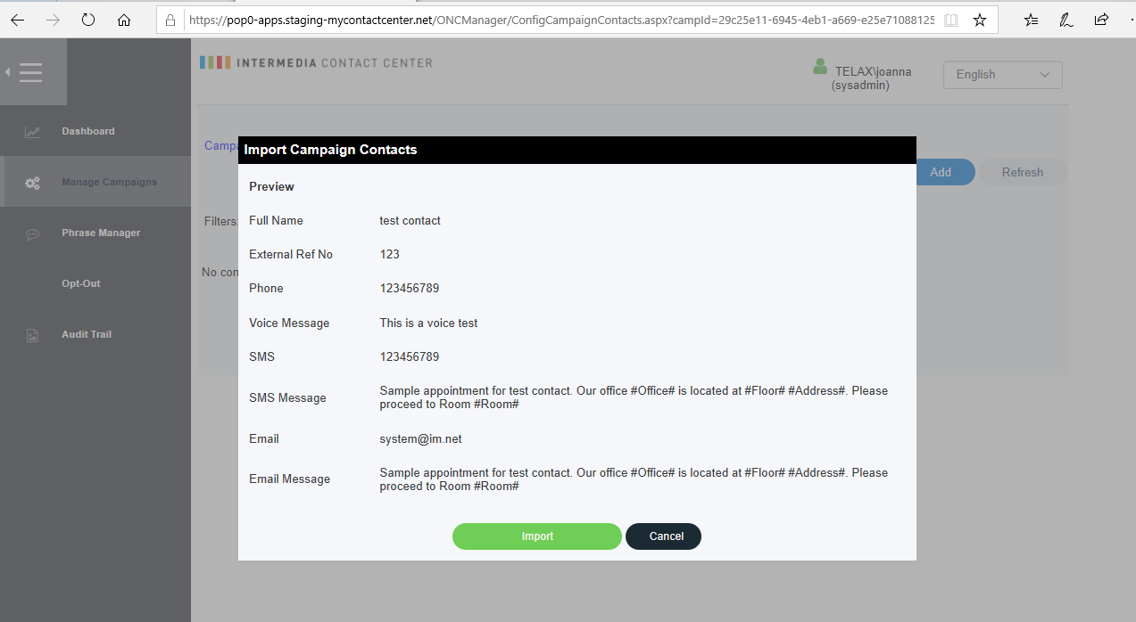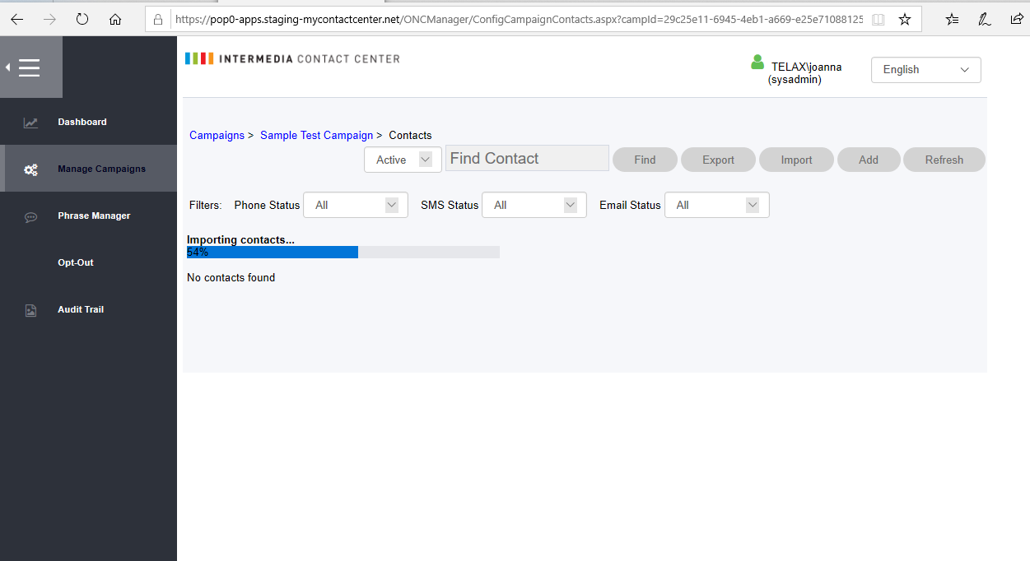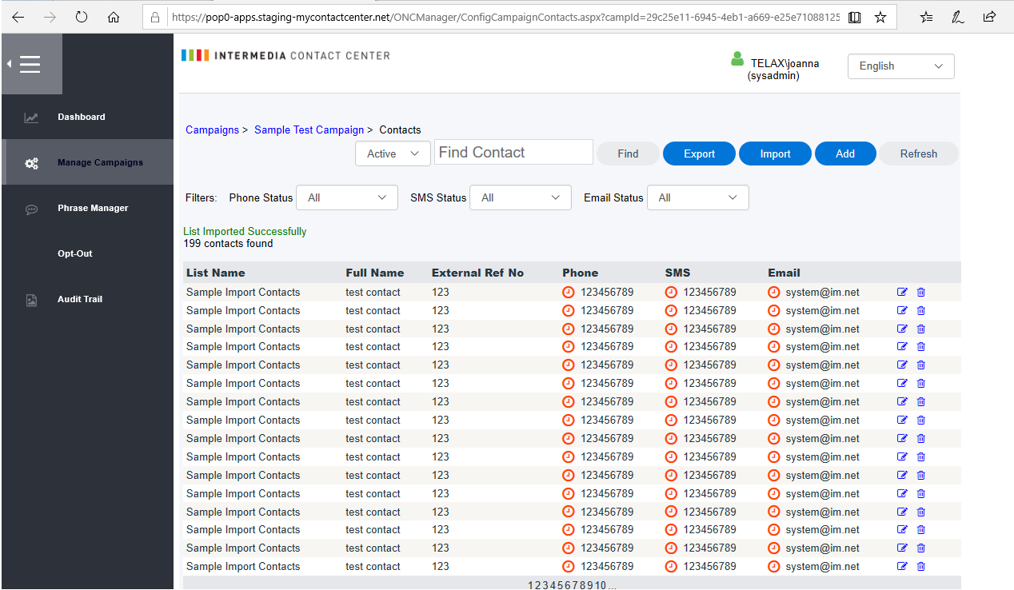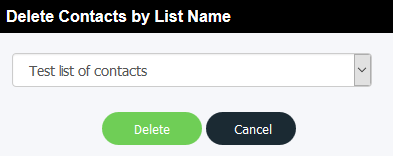To import contacts, you must first prepare a .csv (comma separate value) file. The easiest way to do this is to create a file in Microsoft Excel and save it as a .csv file. The file will contain pertinent information about the list of contacts you want to import into your campaign.
Your .csv file must contain the following five mandatory columns with column headers in the first row entered exactly as shown:
- Fullname: The name of the contact.
- externalRefNo: An external reference number of your choosing that is unique to that contact to help identify that specific addition of the contact. For example, it could be used for appointment reminders to differentiate between a contact who might have the same name, phone number, etc, but several appointments, so the external reference number helps to identify this appointment instead of "that" appointment.
- Phone: The telephone number to be used for voice notifications.
- SMS: The SMS-enabled phone number (i.e., mobile phone number) to be used for SMS notifications.
- Email: The email address to be used for email notifications.
If the campaign is configured to set Phone, SMS, or Email entries to be mandatory for contacts and some of those respective fields are left blank, your import will show the errors for the entries where that data is missing. If those respective fields are not set to mandatory in the campaign configuration, the import will be allowed and any contacts notification media with blank information will be set to "Disabled" status. You must include the externalRefNo column and column header, but the column does not need to include data.
Importing with Parameter Enabled Messaging uses the same import function, but lets you be able to send individual and specific messages to each contact in a campaign without having to enter a message for each contact manually. This is done by importing your .csv file with the relevant data to your campaign. The import replaces details of the message with the words exactly where you want them for each individual contact. For the purposes of this example, we will set up dental appointment reminders using the Dynamic Notification system.
Note: Parameter Enabled Messaging is only compatible with voice campaigns that use the text-to-speech option. If you create a campaign that uses voice recording, you can still use the import wizard, but only the first five mandatory columns will be registered. Any additional columns will be ignored.
To set up a .csv file for parameter-enabled messaging with all data that is relevant to your campaign, first prepare the mandatory five columns in the file (Fullname, externalRefNo, Phone, SMS, and Email). Then add as many columns as you need that are relevant to the campaign. For example, your .csv file might appear as follows:
In the example, the columns that were included after the mandatory ones are: the Doctor with whom the appointment is set up; the Date of the appointment; the Time of the appointment; the Address, Floor number, and Room of the office.
All column headers must be one word. No spaces are allowed. |
- Date columns can only use the following formats:
- English: MM/DD/YYYY. For example, 12/10/2017 will be spoken as "December 10, 2017".
- French: DD/MM/YYYY. for example, 10/12/2017 will be spoken as "10 Décembre 2017".
- Spanish: DD/MM/YYYY. For example, 10/12/2017 will be spoken as "10 de Diciembre de 2017".
- You can write the dates in full words; the chosen language will speak them as written.
- Time columns must be in the 12-hour clock format, with AM or PM added after the time. Again, the French and Spanish voices will speak the time in the selected language.



